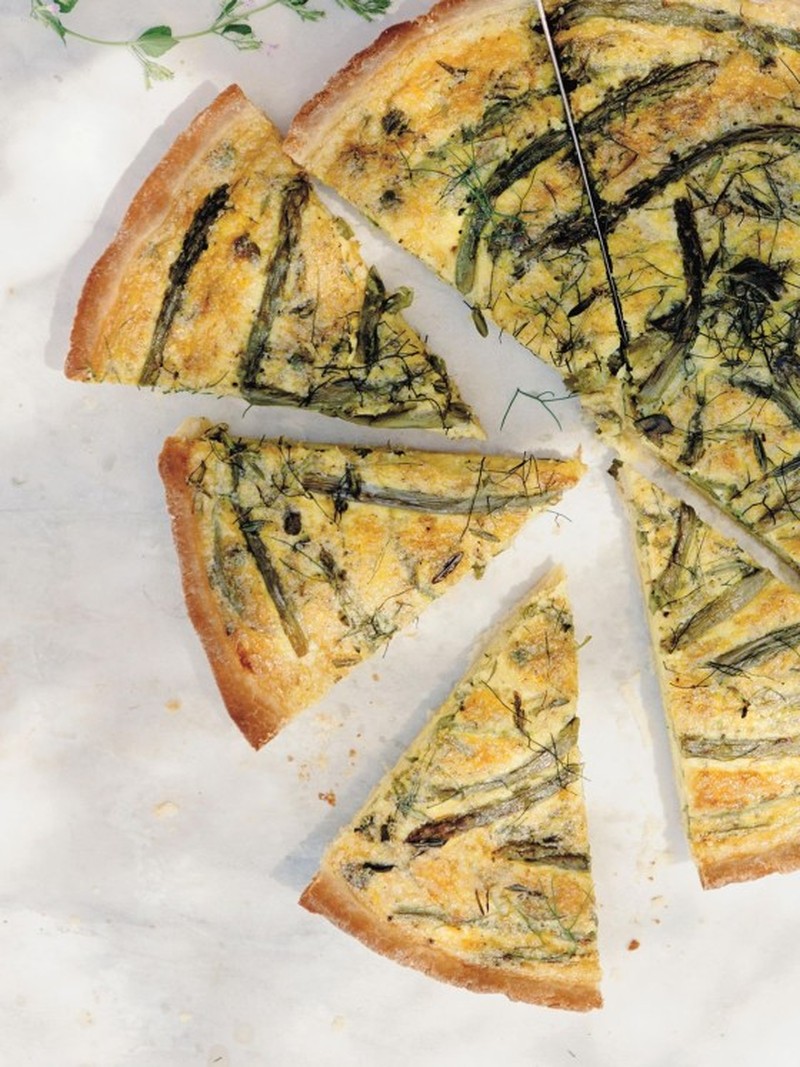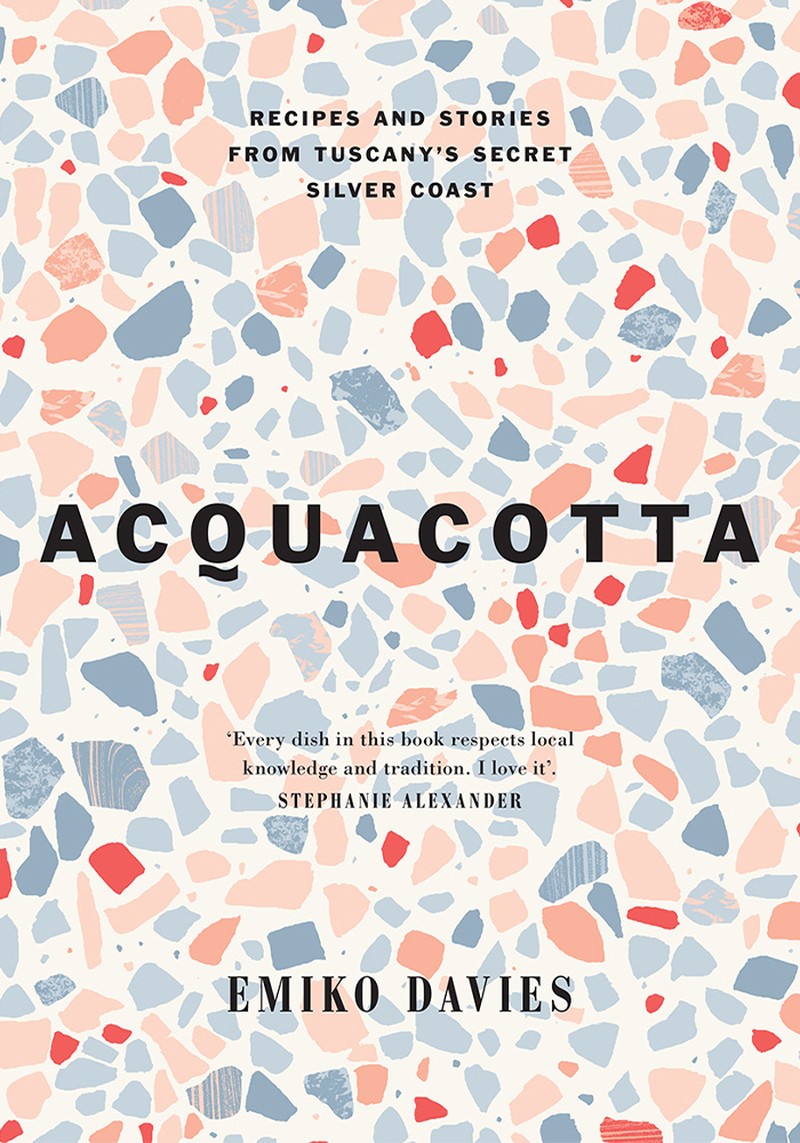Wild Asparagus Tart
To make the pastry, rub the chopped cold butter into the flour until there are no more large pieces of butter left. Add the salt and the milk (or water) a bit at a time until the dough just comes together. Don’t overwork it – stop as soon as it looks smooth and is neither sticky nor dry. If you’re doing this in a food processor, it’s even easier – blitz the butter and flour together and add the liquid in pulses until it comes together and is a smooth consistency.. Chill in the fridge for 30 minutes, covered.
On a work surface dusted with flour, roll the pastry out to 3-4mm thickness. Carefully transfer it to a pie dish approximately 24–26cm in diameter, and gently press it down into the grooves of the dish. Trim the top edge with a sharp knife. Prick the base of the pastry all over with a fork. If making this ahead of time, at this point you can keep the raw pastry crust in the fridge overnight, covered, or keep in the freezer for another time.
When ready to use the pastry crust, heat the oven to 180°C (350°F). Blind bake the pastry crust (this goes for store-bought pastry too) by setting baking paper over the top of the crust and filling the entire pastry case with baking beads. This will help the pastry to bake evenly. If you don’t have baking beads, you can use some dried rice or beans.
Bake for approximately 10-15 minutes, or until the edges of the pastry begin to turn golden. Remove from the oven and remove the baking beads and baking paper carefully. Return the crust back to the oven to ‘dry’ out the base for no more than 5 minutes. Set aside to cool.
Meanwhile, wash and pick through the herbs and asparagus, cutting off any tough parts of the stalk and chopping the rest roughly. Put the onion in a large pan with half the olive oil and a pinch of salt. Cook gently over low heat for 5-10 minutes, stirring occasionally, so the onions sweat and soften without browning. You may need to add a splash of water to keep the mixture moist and so it doesn’t stick. Add the asparagus and the wine (or water), and season with salt and freshly ground black pepper.
Cook, stirring, over low-medium heat for approximately 7-10 minutes, or until tender. Set aside to cool. Beat the eggs together gently with a fork. Season with salt and freshly ground black pepper. Add the cooled asparagus mixture, along with the chopped herbs and cheese, to the eggs. Pour the mixture over the pastry and bake in the oven for approximately 20-25 minutes, until the top is puffed and golden.
Cook, stirring, over low–medium heat for approximately 7-10 minutes, or until tender. Set aside to cool. Beat the eggs together gently with a fork. Season with salt and freshly ground black pepper. Add the cooled asparagus mixture, along with the chopped herbs and cheese, to the eggs. Pour the mixture over the pastry and bake in the oven for approximately 20-25 minutes, until the top is puffed and golden.
Variations
You can use any herbs here. Wild ones common to southern Tuscany would be wild fennel fronds, calamint, wild garlic, nettle and dandelion greens – a mixture of them adds fragrance and zingy character. But otherwise, a mixture of common fresh herbs such as thyme, marjoram, chives, mint and basil would be the next best thing. You can use regular asparagus here too, but try to get the thinnest ones possible. You can even skip the pastry crust completely and have this as a sort of baked frittata.
Recipe Courtesy Of Acquacotta By Emiko Davies (Hardie Grant, £26)
Photography © Lauren Bamford, Emiko Davies



